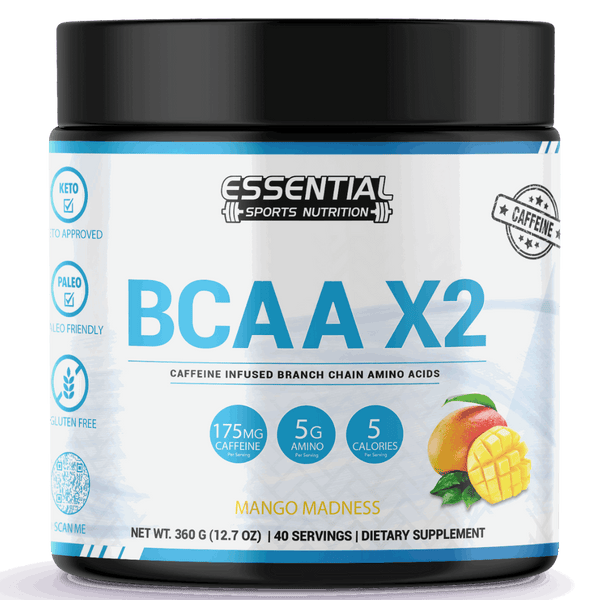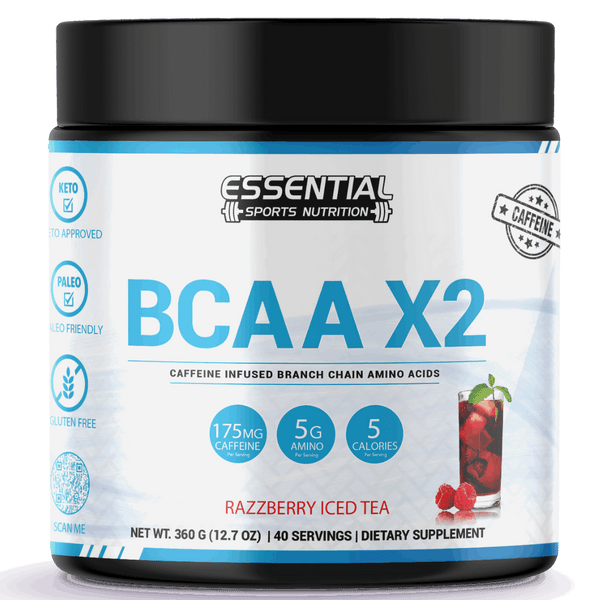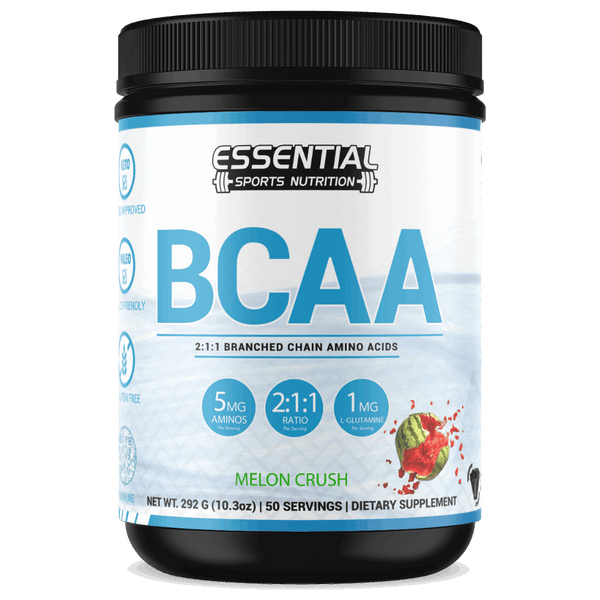Build a Powerful Back by Understanding Muscle Anatomy
It's key to know the anatomy of your back muscles for better health and to improve how you move. These muscles start at the top near your skull and go down to the back of your hips. They help you move, stay stable, and even breathe. Your back muscles work with tendons, ligaments, and nerves to keep you going everyday, whether in sports or normal activities. And they do more than just look good; they help support your spine and keep your vertebrae in line.
The lower back and core benefit a lot from working out your back. Strong back muscles improve your posture, cut down on back pain, and boost your fitness. This is important for anyone, not just athletes. Knowing about and working these muscles is key for a healthier, more resilient body.
Key Takeaways
- Your back muscle anatomy supports essential bodily functions, including movement and stability.
- The major muscle groups of the back range from the upper region near the skull to the lower back.
- These muscles are interconnected with tendons, ligaments, and nerves.
- Strengthening your back muscles can improve posture and alleviate pain.
- Targeted back exercises are crucial for enhancing overall fitness and athletic performance.
Introduction to Back Muscle Anatomy
Understanding the back muscle anatomy is key for staying injury-free and boosting your fitness. Knowing these muscle groups helps in strengthening your back with the right exercises. This can enhance your posture and lessen low back pain. The back's main muscles have big jobs. They support your spine and let you do many movements.
Why Understanding Your Back Muscles is Critical
Learning about your back muscle groups makes your back workout better and safer. This info lets you focus on the back muscles you want to work. It can make you perform better and feel less pain, including low back pain. Plus, knowing about your back can help you stand and sit straighter every day.
An Overview of Major Back Muscle Groups
The key muscle groups of the back are the latissimus dorsi, trapezius, rhomboids, and erector spinae. They're crucial for moving and supporting the spine. Strengthening these zones with the right back workout improves how you move in daily life.
- Latissimus Dorsi: Known as "lats," they boost upper-body strength and motion.
- Trapezius: These muscles support moving and stabilizing the shoulder blades and spine.
- Rhomboids: Under the trapezius, rhomboids keep your shoulders stable and help move them.
- Erector Spinae: Along the spine, these keep you standing straight.
Learning about these back muscle groups is about caring for your health. It highlights the importance of a strong and flexible back.
The Role of the Latissimus Dorsi
The latissimus dorsi, or lats, is an important back muscle. It helps move your arms in different ways. Such as rotating, extending, and drawing the arm towards the body.
This muscle is vital for exercises like pull-ups, pull-downs, and rowing. It runs from the lower back to the arms. This makes it key for creating a V-taper look in your physique.
Function and Location of the Lats
The latissimus dorsi is found in your lower to mid-back and into your arms. It's active in many arm movements. Like when you lift things overhead.
Knowing how this muscle works can improve your workout and back strength. It plays a big role in many activities and sports.
Exercises to Strengthen Your Lats
There are several exercises to build your latissimus dorsi. Some are:
- Pull-ups: A classic that works your lats and other back muscles.
- Pull-downs: Good if you're not ready for pull-ups yet. Helps with overall back strength.
- Seated Cable Rows: It's great for your back and lats. Focuses on pulling movements.
- Bent-Over Barbell Rows: They target the middle back. Important for rotation and extension.
Adding these to your routine will boost your lats' size and your sports performance. It improves your overall back strength too.
Trapezius Muscle: Structure and Function
The trapezius muscle is key in the group of muscles in your back. It stands out with its unique shape and ability to move a lot. From your neck to the middle of your back, the trapezius helps you do many things and keeps your shoulder blade steady.
Sections of the Trapezius Muscle
The trapezius muscle has three parts: upper, middle, and lower. Each part has its job and helps in different ways:
- Upper Trapezius: Lifts the scapula and lets you shrug your shoulders.
- Middle Trapezius: It pulls back the scapula, bringing your shoulder blades together.
- Lower Trapezius: This section lowers the scapula and keeps your spine stable.
Importance of Traps in Upper Back Workouts
It's crucial to include exercises for the traps in your upper back workouts. Shrug, do face pulls, and rows to work your trapezius muscle. This makes you stronger and your upper back more stable. A strong trapezius also helps keep your scapula working right, preventing injuries and making your posture better.
Knowing about the structure and function of the trapezius muscle helps design better workouts. This way, you can focus on these important back muscle groups. This makes for a strong and defined upper back.
Erector Spinae: The Backbone of Your Back
The erector spinae is vital, stretching from your neck's base to your lower back. It helps you stand tall and supports your spine. By strengthening your back, these muscles are key, especially when you bend or stretch.
Working the erector spinae boosts your core strength and can lessen lower back ache. Exercises like deadlifts and back extensions are great for this. They make your back stronger and more flexible, improving your well-being.
Using these muscles in workouts not only strengthens your back. It also helps your other core muscles, boosting balance and strength. This is important for sports and everyday activities needing a flexible backbone.
Here's a table with some great exercises targeting the erector spinae:
| Exercise | Benefits |
|---|---|
| Deadlifts | Strengthens spinal extensor muscles, improves core stability |
| Back Extensions | Targets the erector spinae and lower back, enhances flexibility |
| Good Mornings | Engages intermediate muscles, supports posture |
| Romanian Deadlifts | Builds lower back strength, aids in overall back development |
Adding these exercises to your routine can strengthen your back and support your core. Keeping your erector spinae strong is crucial. After all, it's the backbone of your back.
Rhomboids: Essential for Shoulder Stability
The rhomboids are key for keeping your shoulders steady. They are found under bigger back muscles like the trapezius. Together, they make sure your shoulder blades move right. This is vital for strong shoulders during exercises and daily tasks.
These muscles work closely with other back muscles to keep you standing tall. They lower the chance of hurting your shoulders. Exercises such as rows and pull-ups really work the rhomboids. Improving them boosts your posture, helps prevent shoulder issues, and makes you better at lifting weights.
- Rhomboids: Essential for anchoring the shoulder blades.
- Trapezius: Works together with the rhomboids to stabilize the shoulders.
- Levator Scapulae: Assists in lifting the scapula and aids shoulder movements.
Doing exercises specifically for the rhomboids is important. It helps you do well in different tasks. This includes lifting weights and everyday activities.
Comprehensive Guide to Intrinsic Back Muscles
Knowing about your intrinsic back muscles is key if you want a strong back. These muscles deep in your back help keep you balanced. They also make sure your spine moves smoothly. Let's explore the main intrinsic muscles and what they do.
Key Intrinsic Muscles and Their Functions
The intrinsic back muscles are important. They include the multifidus, spinalis, rotatores, and semispinalis. The multifidus muscles help keep your spine steady while you move. The spinalis muscles allow you to stretch your spine. The rotatores assist with twisting your spine and sensing your body's position. The semispinalis help move and turn your head and upper body.
| Muscle | Function |
|---|---|
| Multifidus | Stabilizes the vertebral column during movement |
| Spinalis | Supports extension of the spine |
| Rotatores | Aids in spinal rotation and proprioception |
| Semispinalis | Extends and rotates the head/thoracic region |
Exercises Targeting Intrinsic Back Muscles
To strengthen your intrinsic back muscles, add exercises for back to your workouts. Here are a few to try:
- Thoracic Mobility Drills: These will make your middle back more flexible and help your posture.
- Bird-Dog Exercise: It boosts your multifidus and makes your spine stable.
- Dead Bug Exercise: This exercise is good for your spinalis and core stabilizers, keeping your spine healthy.
- Spinal Rotations: These work on your rotatores, making your spine more flexible and stronger.
Adding these moves to your fitness plan helps you understand your back muscles better. It also ensures your deep back muscles are in good shape.
Understanding Back Muscle Groups
Back muscles are grouped into three layers: the outer, mid, and inner layers. Each layer has a special job. They work together to move, support, and keep our backs working well.
Superficial vs. Deep Back Muscles
The outer or superficial muscles, like the latissimus dorsi and trapezius, help with big movements and cover a lot of our back. They help us lift and turn our arms. The deeper or intrinsic muscles, like the multifidus and rotatores, help our backbones stay strong. They allow us to move carefully and keep good posture.
The Role of Intermediate Muscles
Intermediate muscles, including the erector spinae, connect the outer and inner layers. They also include muscles that help us breathe well, like the serratus posterior superior and serratus posterior inferior. Working on all these layers in your workout means you get stronger and your back works better.
| Muscle Layer | Examples | Functions |
|---|---|---|
| Superficial Muscles | Latissimus Dorsi, Trapezius | Gross Movements, Arm Rotation |
| Intermediate Muscles | Erector Spinae, Serratus Posterior Superior, Serratus Posterior Inferior | Respiratory Functions, Back Support |
| Intrinsic Muscles | Multifidus, Rotatores | Stability, Fine-tuned Movements |
Strengthening Your Posterior Deltoids
The posterior deltoids are key muscles in the upper back and shoulders. They are essential for moving your arms well. These muscles are important for moving your arms away from your body and turning them outward.
By working on your deltoids, you can move your arms better. This helps in activities that need your upper back to be strong. It also fights bad posture.
To boost your posterior deltoids, try exercises like face pulls and reverse flies. Also, include different rows. These movements make your shoulders stronger. Your upper back will look more defined too.
| Exercise | Target Muscle | Benefit |
|---|---|---|
| Face Pulls | Posterior Deltoids | Improves upper back strength and posture |
| Reverse Flies | Shoulder Muscles | Enhances external rotation and abduction |
| Row Variations | Upper Back Muscles | Targets multiple muscles including deltoids |
Include these exercises regularly in your workout. Doing so keeps your posterior deltoids strong. This greatly helps your upper back and shoulders. You'll notice stronger and more defined muscles. This is proven in daily activities and sports.
How Strong Back Muscles Improve Posture
Keeping your back strong is critical for a straight spine and balanced muscles. If you sit a lot or stand for long hours, a strong back stops you from slouching. It also helps avoid lower back pain by offering support.
"A strong back isn't just for aesthetics; it's crucial for core stability and overall spinal health."
Workouts that hit all your back muscles make your body better at handling daily life. A well-rounded back boosts core strength and makes everyday tasks easier. It's all about keeping everything in your back working together.
To make your back strong, you need a variety of exercises. This approach hits different muscles and keeps your body balanced. Try mixing in rows, pull-ups, and moves that are good for your whole back.
- Rows (Dumbbell, Barbell, or Machine)
- Pull-Ups and Lat Pull-Downs
- Deadlifts and Hyperextensions
- Face Pulls and Reverse Flies
Adding these exercises to your routine will build a stronger, healthier body. You'll stand taller and feel fewer pains by supporting your spine and lower back better.
| Exercise | Primary Muscles Targeted | Benefits |
|---|---|---|
| Rows | Latissimus Dorsi, Rhomboids, Trapezius | Enhances upper back strength, improves posture |
| Pull-Ups | Latissimus Dorsi, Biceps, Shoulders | Builds upper body strength, promotes muscular balance |
| Deadlifts | Erector Spinae, Glutes, Hamstrings | Enhances core stability, supports lower back |
| Face Pulls | Rear Deltoids, Rhomboids, Trapezius | Improves scapular health, enhances posture |
Working your back out can change more than just looks. It boosts your health overall. Make these back exercises a top priority. Your back, core, and posture will thank you.
Conclusion
Knowing your back muscles well is key in reaching your fitness aims, easing pain, and boosting daily tasks. Learn about each muscle and its role. This helps you aim your exercises better.
A complete view of your back muscles matters. It connects muscle steady, movement, and power. This info is useful for everyone, not just athletes. It's for those wanting better posture, less pain, and easier daily tasks. A mix of exercises based on these ideas makes for a strong, good looking back.
There are many muscles and structures in your back, all working together. By focusing your exercises, you make your back look better and remain stronger. Remember to work on all muscle sizes. This gives you a well-rounded, efficient back workout. It's all you need to know for top back training.
Source Links
- https://my.clevelandclinic.org/health/body/21632-back-muscles
- https://www.garagegymreviews.com/back-muscles-anatomy
- https://barbend.com/back-muscles-anatomy/
Core Muscles Groups of the Back FAQs
Q: What are the back muscle groups?
A: The back muscle groups refer to the various muscles located in the back region that support posture, movement, and strength in the body.
Q: How many muscle groups make up the back?
A: The back is made up of several muscle groups, including the intrinsic and extrinsic back muscles, which work together to facilitate various movements and functions.
Q: What is the anatomy of the muscles of the back?
A: The muscles of the back consist of both superficial and deep muscles, such as the erector spinae group, rhomboid major, and other muscles that help in stabilizing the spine and shoulder blades.
Q: What is the role of intrinsic back muscles?
A: Intrinsic back muscles are located deep within the back and play a crucial role in providing stability and support to the spine and facilitating movements of the vertebral column.
Q: How can I target my back muscles in a workout?
A: Performing back exercises, such as rows, pull-ups, and deadlifts, can help target and strengthen the different muscle groups in the back, including the core and upper back muscles.
Q: What are the functions of the extrinsic back muscles?
A: Extrinsic back muscles are responsible for movements of the upper limb, shoulder blades, and upper back, supporting various actions like shoulder rotation and arm movements.
Q: What is the significance of the intermediate back muscles?
A: Intermediate back muscles, situated between the superficial and deep back muscles, contribute to the stability and strength of the back while assisting in movements of the spine and upper body.




























